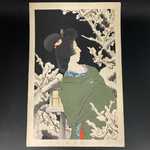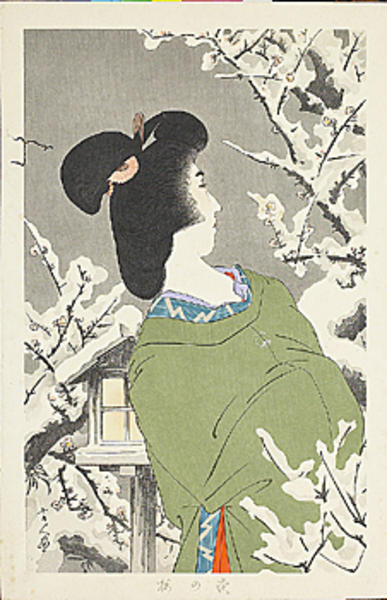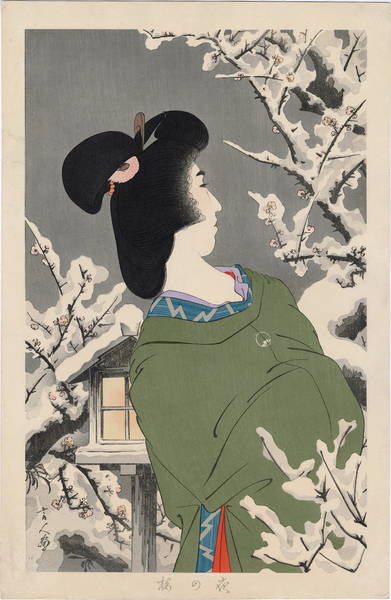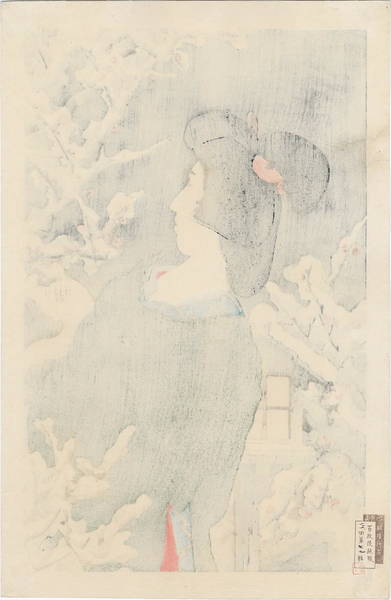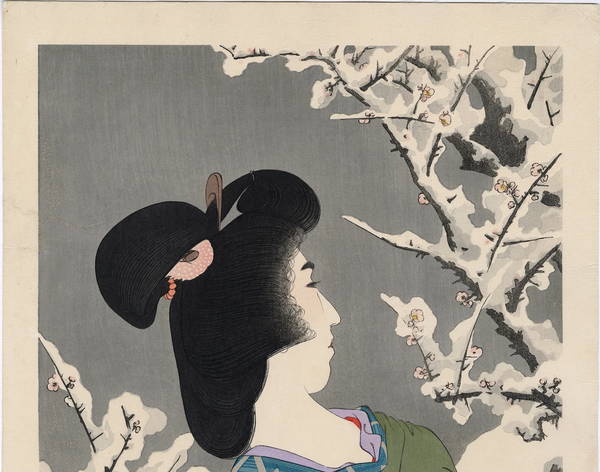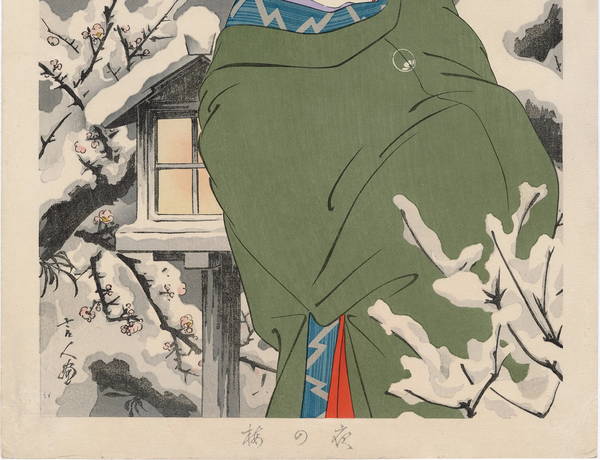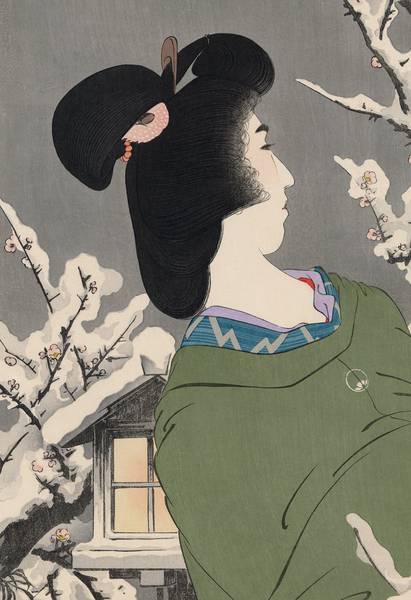| | |
| Artist: | Torii Kotondo (1900-1976) — 鳥居言人 |
| Title: | Plum Blossoms at Night (grey background) — 夜の梅 |
| Series: | |
| Date of first edition?: | 1934 |
| Publisher (first edition)?: | Ikeda — 池田 |
| Publisher (this edition)?: | Ikeda — 池田 |
| Medium (first edition): | Woodblock |
| Medium (this edition): | Woodblock |
| Format (first edition): | Oban
|
| Format (this edition): | Oban |
| DB artwork code: | 39965 |
| Notes (first edition)?: |
Dated 1934 (confirmed. Month not yet confirmed).
Limited edition of only 100 prints, after which the blocks were destroyed.
Scene number 11 among 12 Ikeda published scenes (although some prints are marked as scene 3)
This scene has two colour variants: one with a black background and one with a light grey background. |
|
| Notes (this edition)?: |
| The following information was taken from the original web listing of this artwork. Note that there may be some inaccuracies:
Wednesday, 27 December 2006
Torii Kotondo (1900-1976)
6. Yoro no Ume (Japanese Plum Tree in the Night) 1934
Very good impression and colors. 2 wormholes otherwise generally very good condition. First edition: Number 3 out of edition of 72 (no, probably scene 11, edition 72 of 100).
Later (2025 - Egenolf Gallery):
Artist: Torii Kotondo (1900-1976)
Title: Japanese Apricot Tree at Night
Date: 1934
A formally attired beauty admires the snow-covered apricot blossoms to her right as she passes a wooden lantern, perhaps on her way to a dinner party. Apricots bloom during the darkest days of winter, so they must be quite remarkable amidst the somber winter landscape. Her outer cloak covers her elaborately tied obi, which creates the bundle on her back seen beneath the green outer garment. This is one of Kotondo’s most scarce designs and it appears only rarely on the market. From a limited edition of 72/100; seal verso.
Publisher: Ikeda Tomizo
Literature: The Female Image, plate 186.
Condition: Excellent impression. Very good color and condition. Area of narrow repaired wormage in the grey background.
Signature: Kotondo ga |
|
| Artist Bio: |
| Torii Kotondo (or Torii Kiyotada VIII) is renowned for his paintings and shin hanga prints of beautiful women. His woodblock prints, superbly carved and printed, are comparable with those of Hashiguchi Goyo and Ito Shinsui. Kotondo was born with the name Saito Akira in the Nihonbashi district of Tokyo. He was the only son among the five children of Torii Kiyotada, the seventh Torii master. The Torii school had a long tradition of painting and printmaking for the Japanese theater, extending back to the seventeenth century. Kabuki theater was still very popular in the early twentieth century and prints and painted posters were the primary means of publicity. Although Kotondo was mainly interested in studying history and archaeology, it was assumed that he would follow in his father's footsteps and join the Torii school. At age 14, Kotondo agreed to leave school and begin studies with Kobori Tomone, a yamato-e painter. Along with painting classes, Tomone taught Kotondo about the court and military practices of ancient Japan, satisfying his interest in history. A year later, he was officially adopted as the next heir of the Torii school and assumed the artist's name 'Kotondo'. While still studying with Tomone, he began designing illustrations for a theatrical magazine, Engei Gaho ('Entertainment Illustrated Magazine'), and painted kabuki posters and billboards. Torii Kotondo was the 8th Torii and the 5th Torii Kiyotada. His father was the 4th Kiyotada.
|
|






